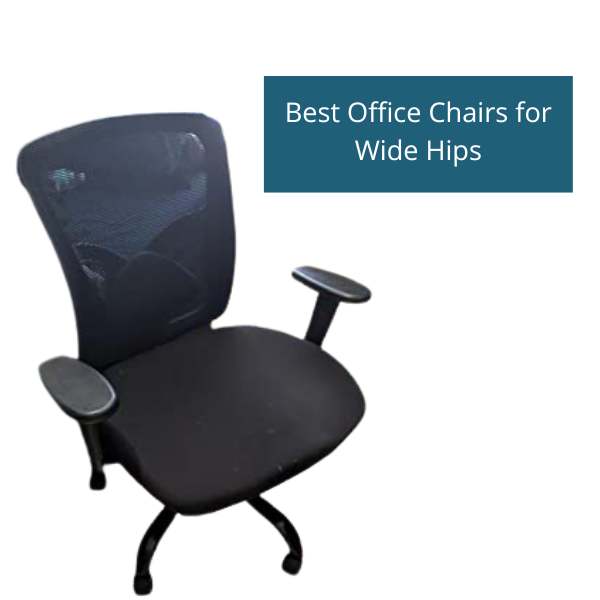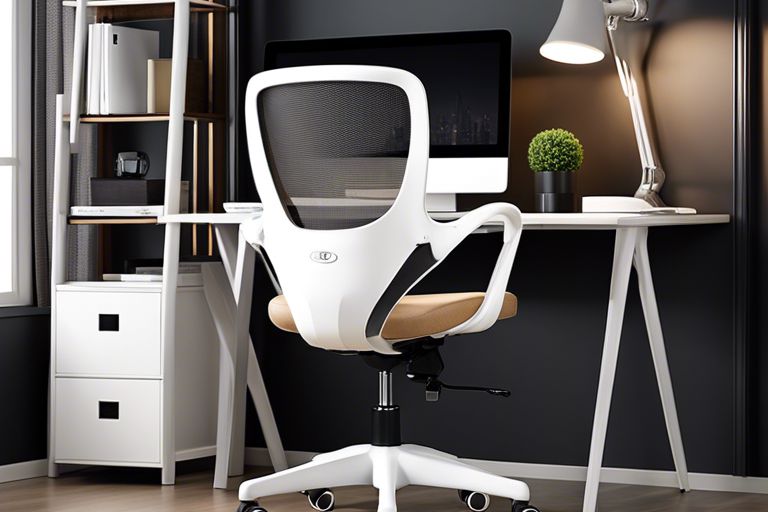Do you find yourself constantly struggling with back pain and poor posture after a long day at the office? The right office chair can make all the difference in improving your overall comfort and well-being. With the correct chair, you can reduce the strain on your back muscles and improve your posture in the workplace. It’s vital to choose an office chair that provides adequate support for your lower back and helps you maintain a neutral spine position. In this blog post, we will provide you with essential tips and information on how to select the best office chair for your needs to alleviate back pain and promote better posture.
Understanding the impact of posture on back pain
The position in which you hold your body while sitting, standing, or lying down is what’s known as your posture. The impact of this posture can have significant effects on your overall spinal health, particularly when it comes to the prevalence of back pain. Understanding the connection between proper posture and reduced back pain is crucial for maintaining a healthy and pain-free back.
The importance of proper posture
Proper posture plays a critical role in the health of your spine and overall musculoskeletal system. When you sit, stand, or walk with good posture, it helps keep your bones and joints in correct alignment, reducing the risk of abnormal wearing of joint surfaces. It also minimizes the strain on your muscles, which can prevent muscle fatigue and back pain. Furthermore, good posture can improve your breathing and digestion, as well as contribute to overall feelings of confidence and positive self-image.
How poor posture contributes to back pain
Poor posture is one of the leading contributors to back pain. When you slouch or hunch over, it puts excessive strain on the muscles and ligaments of your back. This can lead to muscle fatigue and increased pressure on the spinal discs, contributing to conditions such as herniated discs and sciatica. Over time, poor posture can also lead to structural changes in your spine, causing chronic pain and increased susceptibility to injuries. Additionally, it can compress and constrict blood vessels and nerves, leading to impaired circulation and nerve function, exacerbating pain and discomfort.
Choosing the right office chair for improved posture
Assuming you spend a significant amount of time sitting at a desk for work or studying, it’s crucial to invest in the right office chair to ensure proper support and comfort. The right office chair can go a long way in improving your posture and reducing back pain.
Key features to look for in an office chair
When selecting the right office chair, there are several key features you should look for to ensure it provides the necessary support for improved posture and reduced back pain:
- Adjustable Seat Height: Look for a chair that allows you to adjust the seat height to ensure your feet are flat on the floor and your knees are at a 90-degree angle.
- Lumbar Support: A chair with proper lumbar support will help maintain the natural curve of your spine, reducing strain on your lower back.
- Adjustable Armrests: Armrests that can be adjusted to the right height can help prevent shoulder and neck pain by allowing your arms to rest comfortably.
- Seat Depth and Width: A chair with a seat that allows for proper distribution of your weight and supports your thighs is essential for comfort and improved posture.
- Swivel Base: A chair that allows you to easily rotate and reach different areas of your desk without straining your body can help reduce back and neck pain.
Knowing what features to look for in an office chair will help ensure you find one that provides the necessary support for improved posture and reduced back pain.
Ergonomic design principles for reducing back pain
When it comes to reducing back pain, an office chair that follows ergonomic design principles is crucial. Look for a chair that promotes proper body alignment and supports the natural curve of your spine. This can help reduce the strain on your back and prevent discomfort during long periods of sitting. Additionally, consider a chair with a seat that promotes good posture and encourages movement, as staying in one position for an extended period can contribute to back pain.

Incorporating other posture-improving habits in the workplace
Now that you’ve found the right office chair to improve your posture and reduce back pain, it’s important to incorporate other habits that support a healthy spine throughout the workday. To further enhance your posture and reduce discomfort, it’s essential to create an ergonomic workspace, incorporate regular movement and stretching into your workday, and maintain awareness of your posture and body positioning.
Creating an ergonomic workspace
When it comes to creating an ergonomic workspace, it’s important to ensure that your desk, computer, keyboard, and mouse are all positioned in a way that promotes proper spinal alignment. Your monitor should be at eye level, your chair should provide adequate lumbar support, and your keyboard and mouse should be placed at a comfortable height to prevent strain on your wrists and arms. Additionally, investing in a standing desk or a desk converter can allow you to alternate between sitting and standing throughout the day, which can help reduce the negative effects of prolonged sitting.
Incorporating regular movement and stretching into the workday
It’s crucial to remember that regular movement is key to maintaining a healthy spine. Make an effort to take short breaks throughout the day to stand up, stretch, and walk around. Set a timer on your phone or computer to remind yourself to change positions, and consider incorporating stretching exercises specifically designed to target the muscles that may become tight from sitting for long periods. You can find a variety of desk-friendly stretches and exercises that can help alleviate tension and improve your overall posture.
Office Chair: How to Reduce Back Pain? – Prairie Spine
The Importance of Choosing the Right Office Chair
The right office chair can significantly improve your posture and reduce back pain, ultimately leading to a more comfortable and productive workday. By choosing a chair with proper lumbar support, adjustable seat height, and comfortable padding, you can ensure that your spine is properly aligned and supported throughout the day. Additionally, utilizing ergonomic features such as armrests and a swivel base can further enhance your sitting experience. Making the effort to invest in a quality office chair that caters to your specific needs can make a world of difference in your overall comfort and well-being, so don’t underestimate the impact that the right chair can have on your daily work life.
FAQ
Q: Can the right office chair really improve my posture and reduce back pain?
A: Yes, a proper office chair with ergonomic features can greatly improve your posture and reduce back pain. These chairs are designed to provide optimal support to the spine, promoting good posture and reducing the strain on your back muscles.
Q: What are the key features to look for in an office chair to improve posture and reduce back pain?
A: Look for a chair with adjustable lumbar support to maintain the natural curve of your lower back, adjustable armrests to reduce shoulder and neck tension, and a seat depth and height that can be adjusted to support your thighs and promote proper circulation. A chair with a reclining feature can also help distribute the weight and reduce pressure on the spine.
Q: How should I adjust my office chair to improve posture and reduce back pain?
A: First, ensure that your feet are flat on the floor and your knees are at a 90-degree angle. Adjust the lumbar support to fit the natural curve of your lower back and position the armrests to support your arms and shoulders. The seat height should allow your thighs to be parallel to the ground, and the backrest should be adjusted to recline slightly to relieve pressure on the spine.
- How to choose the right office chair for your body type? - December 19, 2023
- What are the best ergonomic features to look for in an office chair? - December 18, 2023
- Is sitting on an exercise ball an effective alternative to a traditional office chair? - December 15, 2023






